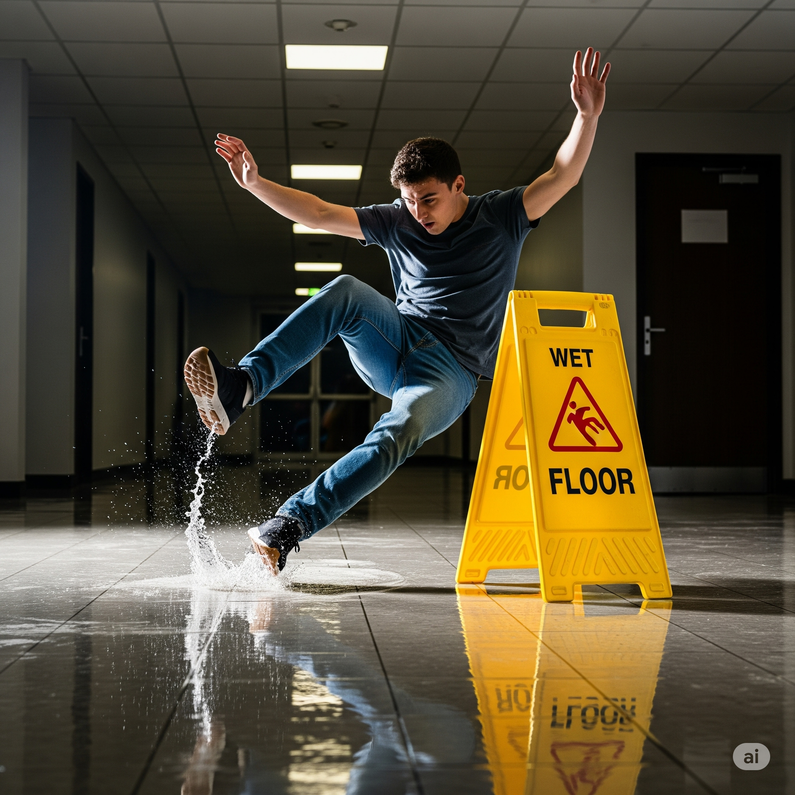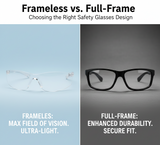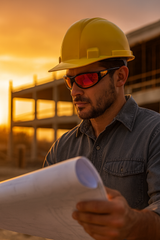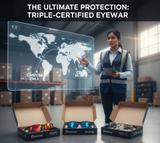The Invisible Culprit: How to Prevent Slips, Trips, and Falls in Your Workplace
Slips, trips, and falls are the silent culprits of the workplace, often overlooked until an accident happens. Unlike the more dramatic hazards like machinery or chemicals, these seemingly minor risks are a leading cause of injuries across all industries—from busy warehouses to quiet office spaces. But they are also among the most preventable accidents. By understanding the causes and taking simple, proactive steps, you can significantly reduce the risk and create a safer environment for everyone.
Understanding the Difference
While often lumped together, slips, trips, and falls are distinct events with different causes:
-
Slips happen when there is too little friction between your feet and the walking surface. This is typically caused by wet or oily floors, polished surfaces, or loose rugs.
-
Trips occur when your foot collides with an object, causing you to lose your balance. Common causes include clutter, wires, open drawers, and uneven floor surfaces.
-
Falls happen when you lose your balance and drop to the floor or a lower level. This can be a result of a slip or a trip, or it can be caused by using a chair instead of a proper ladder, or working on an elevated surface without protection.
Practical Prevention Strategies
The good news is that preventing these accidents doesn't require a complex overhaul of your business. It's often about awareness and consistent, common-sense practices.
1. Practice Good Housekeeping
This is the number one defense against trips. Keep all walkways clear of clutter, equipment, boxes, and stray tools. Ensure that cords and cables are routed safely away from foot traffic or are properly covered. For warehouses or manufacturing floors, a "place for everything and everything in its place" policy is your best friend.
2. Maintain Your Floors
A well-maintained floor is a safe floor. Promptly clean up all spills—liquid, oil, or even dry debris like sawdust—and use "wet floor" signs to warn people of the hazard. Fix or report uneven flooring, loose floorboards, and frayed carpet. Additionally, consider using anti-slip matting in areas prone to wetness, such as entryways, kitchens, or loading docks.
3. Ensure Proper Lighting
Poor lighting can turn a small hazard into a major one. Ensure all stairways, walkways, and work areas are well-lit. Replace burnt-out bulbs immediately and make sure light fixtures aren't blocked by stacks of boxes or equipment.
4. Choose the Right Footwear
The shoes your employees wear are their first line of defense. Enforce a policy that requires non-slip, closed-toe footwear. For environments with specific hazards like grease or oil, footwear with specialized outsoles can make a significant difference.
5. Encourage Awareness
Finally, a strong safety culture starts with the people. Encourage employees to be vigilant and report any hazards they see, no matter how small. A spill that's cleaned up in five seconds is an accident that never happened. Regular training sessions and safety reminders can keep these simple, but crucial, habits top of mind.
Preventing slips, trips, and falls is about looking beyond the major hazards and focusing on the details of your work environment. By implementing these simple and consistent strategies, you can significantly reduce the risk of injury and create a safer, more productive workplace for your entire team.
If you are looking to review your workplace for potential slip and fall hazards or need to source appropriate safety supplies like non-slip matting and signage, we can help. A small investment in prevention today is a big investment in your team's safety tomorrow.
Recent Posts
-
Frameless vs. Full-Frame: Which Safety Glasses Design is Right for You?
When choosing safety eyewear, the lens color and coating are critical, but the frame design itself p …8th Dec 2025 -
Beyond Clear Lenses: Choosing the Right Safety Glasses for Your Job Site
When it comes to workplace safety, eye protection is non-negotiable. But "safety glasses" are far mo …4th Dec 2025 -
The Ultimate Protection: Why Triple-Certified Eyewear is Essential for Modern Safety Programs
Introduction For safety managers overseeing operations across North America and Europe, compliance …3rd Dec 2025



